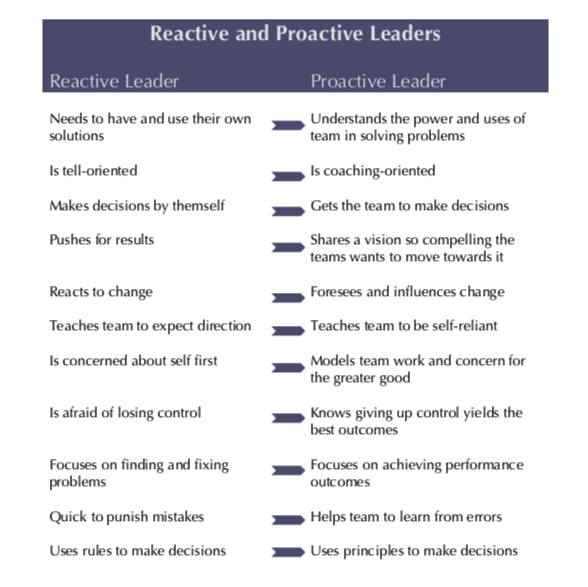
Some leaders are really great in a crisis. You know the kind: they step up without hesitation, create a plan, provide clarity in uncertainty, and mobilise their troops into action.
I once worked with a Chief Executive just like this. By all positive measures he was truly exceptional in a crisis. The crisis besetting his organisation was complex and required deep and transformative change – and he pulled it off.
But what happened next really made me curious. Once the crisis was over, and the organisation was on a more even keel, he created another crisis. Then another, and another. It was as if he had only one modus operandi: crisis mode. And where it didn’t already exist, he’d create it so he could move into his preferred type of action.
A crisis that happens completely outside the realm of the organisation, such as that brought on by Covid-19 and the resultant lockdown, is an external crisis. But many other crises are created not by one-off external events but rather by an accumulation or chain of errors leading to systemic failure. And when many of the conditions that create these sorts of issues exist because leadership is focused on reactive problem-solving, you can see we have a double-edged problem on our hands.
Crisis begets more crisis. And then a reactive, firefighting approach becomes the normal way to do things, continually demanding – as a crisis does – high levels of energy, time, money and employee goodwill.
The apparent pay-off of being reactive
Operating in crisis mode is akin to leadership by firefighting. Most of us are familiar with a leader who operates this way, and we may have wondered: why? Why do some leaders not only thrive on crisis, but actively seek it out?
There are a number of normal physiological responses that happen to us all when we’re in firefighting mode, and these in turn deliver benefits that can be habit-forming and addictive.
Firstly, there’s the normal hormonal responses, including adrenalin and cortisol that trigger and fuel our bodies into ‘fight or flight’ mode. This provides us with the physical advantage we need to move faster and more efficiently. In the short-term this provides us with an energetic advantage and propels us to get things done, but some leaders become reliant on the adrenalin; for some it makes them feel alive, energised and important.
Secondly, there’s a simple truth about a crisis: putting out fires makes you a hero – and that creates another physiological response, this time the feel-good dopamine hit from our brain’s reward system. There’s a great deal of attention and kudos paid to a leader who successfully navigates a crisis and saves the day. Of course, heroics usually create high levels of visibility which is why many organisations inadvertently reward and encourage this behaviour. After all, it’s more visible and dramatic than simply delivering the business – getting things done well day after day – or the longer-term visioning work where the payoffs take time to come to fruition.
The downsides of a reactive focus
Those seeking to make an impact often look for the high-profile events upon which they can make their mark. But even though they often are rewarded with praise and promotion, the downsides outweigh the upsides, personally and organisationally.
Being in a high-octane situation and feeling needed, and all those physiological responses I described, may well meet your short-term needs. But as human beings we have higher needs that need to be fulfilled – such as purpose, contribution and legacy. In the C-suite, one of the most important questions you can ask yourself is: what is the purpose that you are achieving in your leadership?
This is why reactive leaders are unlikely to look back over a career and feel they have accomplished much of meaning.
Proactive leaders are not just playing the long game for their organisation, but also for themselves. When they look back at what they have achieved, it amounts to more than the sum of its parts. Cumulatively it has integrity as a journey worthy of the person on it. And it has taken then to an intentional destination of which they can feel proud.
Of course there needs to be a balance between a proactive and a reactive approach. A crisis can’t wait. It must be responded to, and ignoring it can potentially prove catastrophic. There often are times when we must be reactive, but it’s when it gets out of kilter that it becomes problematic.
As leaders, you’ll be pulled towards the reactive continually. It’s always been there, but I think its draw is increasing – for all the reasons I have outlined here. And so you have a tangible opportunity: you can create your own competitive advantage by leading with much greater deliberation, purpose and intention.
What’s the antidote?
Stephen Covey, author of the legendary best-selling book, The Seven Habits of Highly Effective People, notes that the very first habit effective leaders cultivate is to be proactive.
Proactive leaders know the importance of balancing short-term needs and long-term desires. They focus on creating a future, rather than just reacting to it.
Being habitually proactive requires a different mindse and cultivating different skills that set you apart from a reactive leader. It requires you to look to and beyond the horizon, concerning yourself not just with what’s pressing for attention right now, but also what may impact you in the future.
The table below, adapted from the University of California, summarises the differences between proactive and reactive leaders:
Cultivate ways out of reactivity
Here are three things you can do to start building your proactive leadership mindset:
- Cultivate patience. A focus on crisis can be based on impatience, and wanting things done now. But those things need precisely the right amount of time to reach maturity, and many things are not amenable to you rushing them along.
- Cultivate balance. Manage your energy – and if you have an abundance of energy, find multiple outlets for it. Leave the business behind and find a physical outlet – tennis, cycling, skydiving! If you put all your energy into one thing, you may become too reliant on that one thing for your feelings of achievement and self-worth, so spread your interests.
- Cultivate purpose. Your days can be busy and yet move you further away from your goals. It’s only by knowing your ultimate purpose and direction that you can align your daily actions towards it. By getting clear on your purpose, you can assess how and where you put your time to lead you towards your goals.
The lure of the reactive will keep pulling us
Here’s the thing. Just because we’re coming out of this phase of Covid doesn’t mean we won’t be in crisis mode again. At a global level, the last 20 years have seen an unprecedented and accelerated series of events that have impacted business. The dot.com bubble burst, 9/11 happened, the financial crash caused a global financial melt-down. That’s before we add in industry-specific issues, new technological developments, and national or local issues. There’s plenty to keep the crisis-addicted leader busy!
Ultimately, there is a simple truth in this matter: while a crisis leader can be crucial for an organisation at certain moments in time, it’s the proactive leader we need at all other times. Only with proactive leaders will we create thriving and resilient businesses suited to (and weatherproofed against) the ongoing flux of our turbulent business environment.
By Jacqueline Conway…
Dr Jacqueline Conway works with CEOs and executive teams as they fully step into their collective enterprise-wide leadership, helping them transform their impact and effectiveness.
Jacqueline is Waldencroft’s Managing Director. Based in Edinburgh, she works globally with organisations facing disruption in the new world of work.

